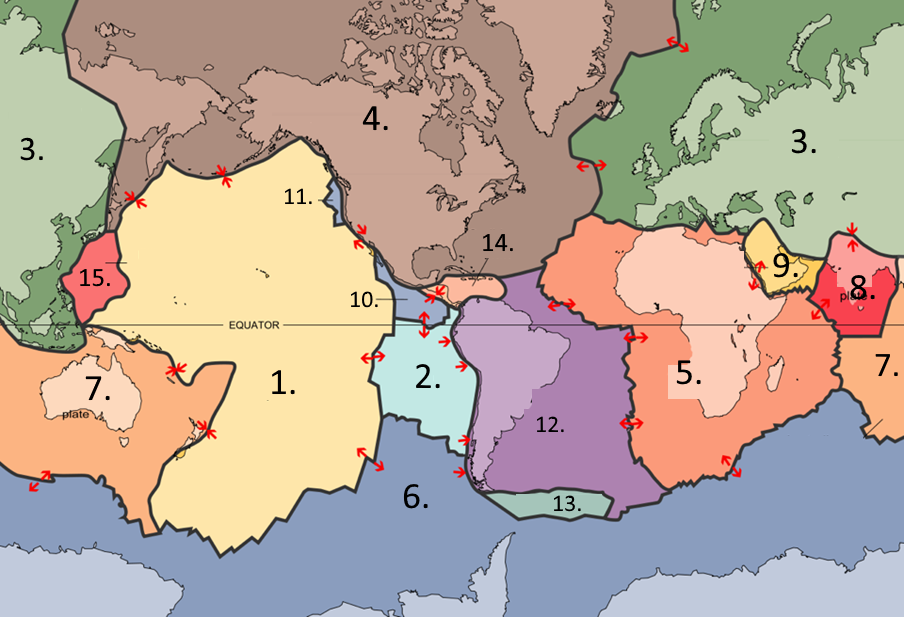4.3. Plate Tectonics – Review Questions

- Identify and label the tectonic plates (numbered from 1 to 15) on Figure 4.3.1 above.
- Consider the North American Plate (the plate labelled 4 in Figure 4.3.1):
- What regions of the plate are continental crust?
-
- What regions of the plate are oceanic crust?
-
- What kinds of plate tectonic boundaries are located at the edges of the North American Plate?
- Consider the Pacific Plate (the plate labelled 1 in Figure 4.3.1):
- What regions of the plate are continental crust?
-
- What regions of the plate are oceanic crust?
-
- What kinds of plate tectonic boundaries are located at the edges of the Pacific Plate?
- Consider the South American Plate (the plate labelled 12 in Figure 4.3.1):
- What regions of the plate are continental crust?
-
- What regions of the plate are oceanic crust?
-
- What kinds of plate tectonic boundaries are located at the edges of the South American Plate?
- Consider the Antarctic Plate (the plate labelled 6 in Figure 4.3.1):
- What regions of the plate are continental crust?
-
- What regions of the plate are oceanic crust?
-
- What kinds of plate tectonic boundaries are located at the edges of the Antarctic Plate?
- Consider the continent of North America (located on the North American Plate): how does the plate tectonic environment of the Pacific coast of North America differ from that of the Atlantic coast of North America?
- What evidence did Wegener use to develop the hypothesis of continental drift?
- Where is the eastern edge of the North American plate? How does the eastern edge of the North American plate differ from the eastern edge of the North American continent?
- List the three types of plate boundary and draw a cross-section of each of them. Find examples of each type of plate boundary on Figure 4.3.1.
- List the three types of convergent plate boundary and draw a cross-section of each of them. Locate an example of each type of plate boundary on Figure 4.3.1.
- At convergent plate boundaries, one of the plates often subducts beneath the other plate. what property determines which plate subducts?
- What does it mean to say that a plate boundary is conservative? Give an example of a conservative plate boundary (location).
- Is the oceanic lithosphere in the centre of the Atlantic Ocean floor younger or older than the oceanic lithosphere in the Atlantic Ocean floor at the coast of the USA?
- Describe how magnetic polarity and magnetic striping in the rock record can be used to determine rates of plate movement.
- Give an example of a hot spot plume located under continental lithosphere, and a hot spot plume located under oceanic lithosphere. What geological evidence is associated with each hot spot location that geologists can use to tell us how they were produced?
- How can we use evidence such as the positions of the islands in the Hawaiian island archipelago to learn about tectonic plate motion?


